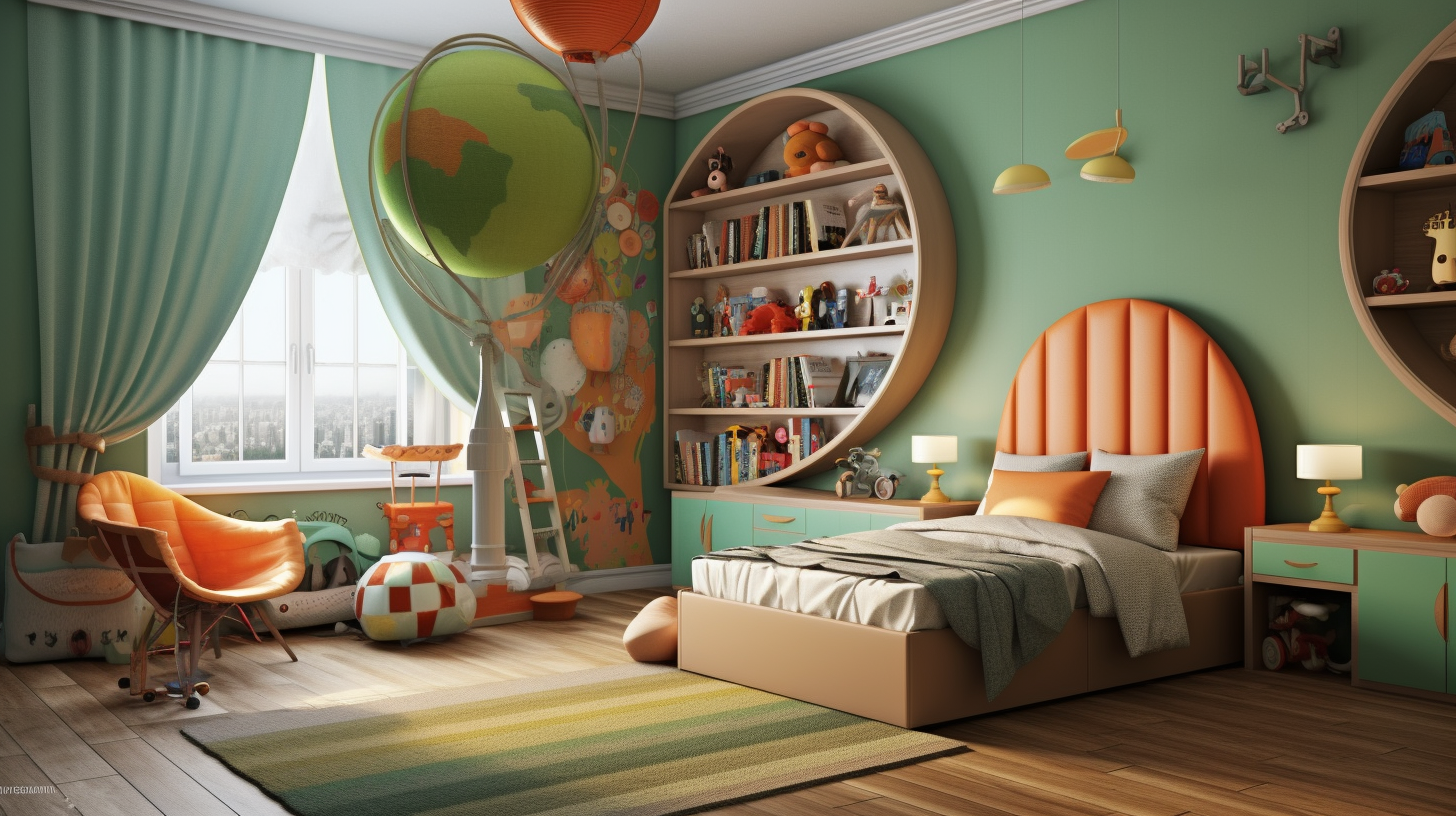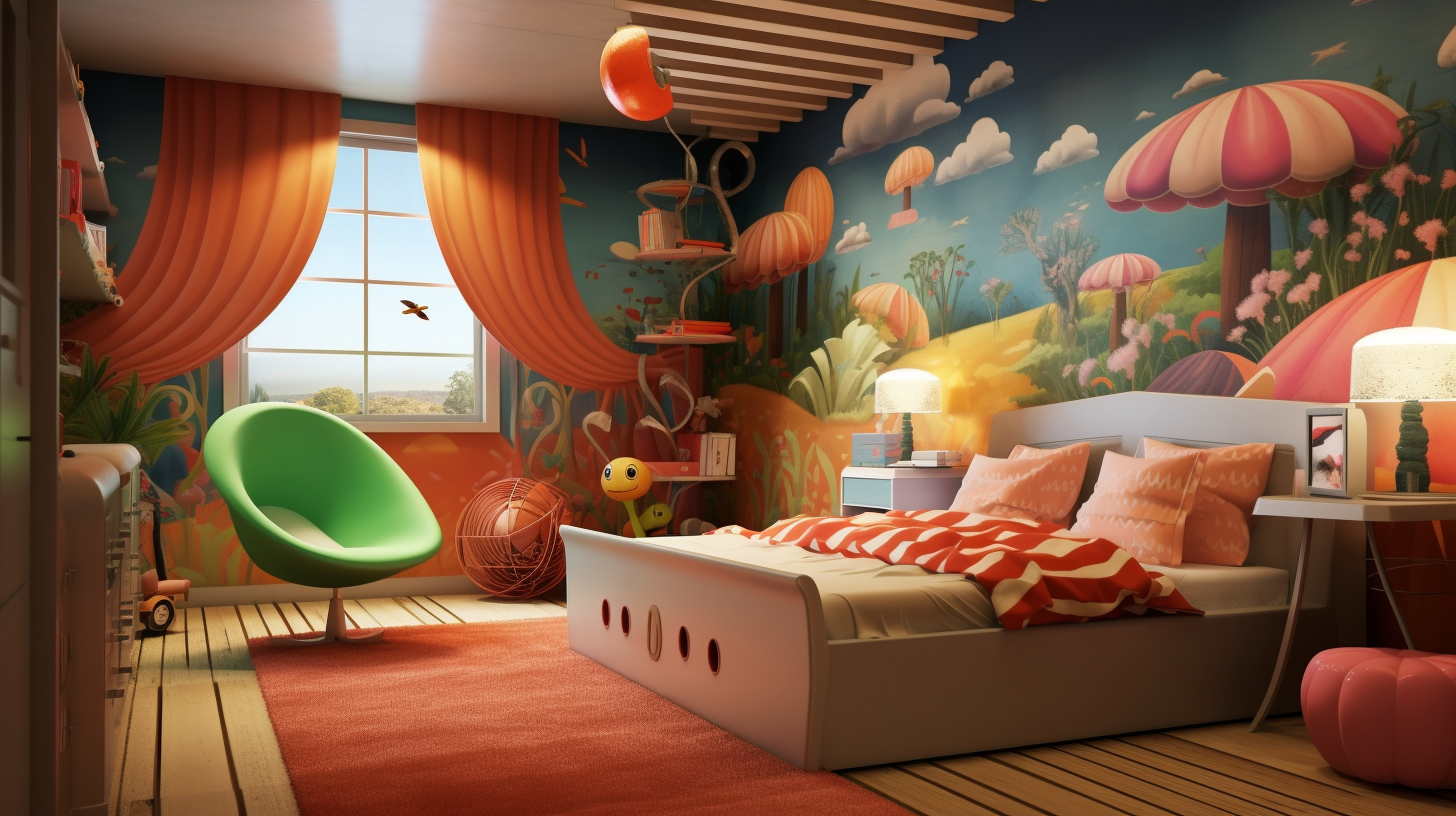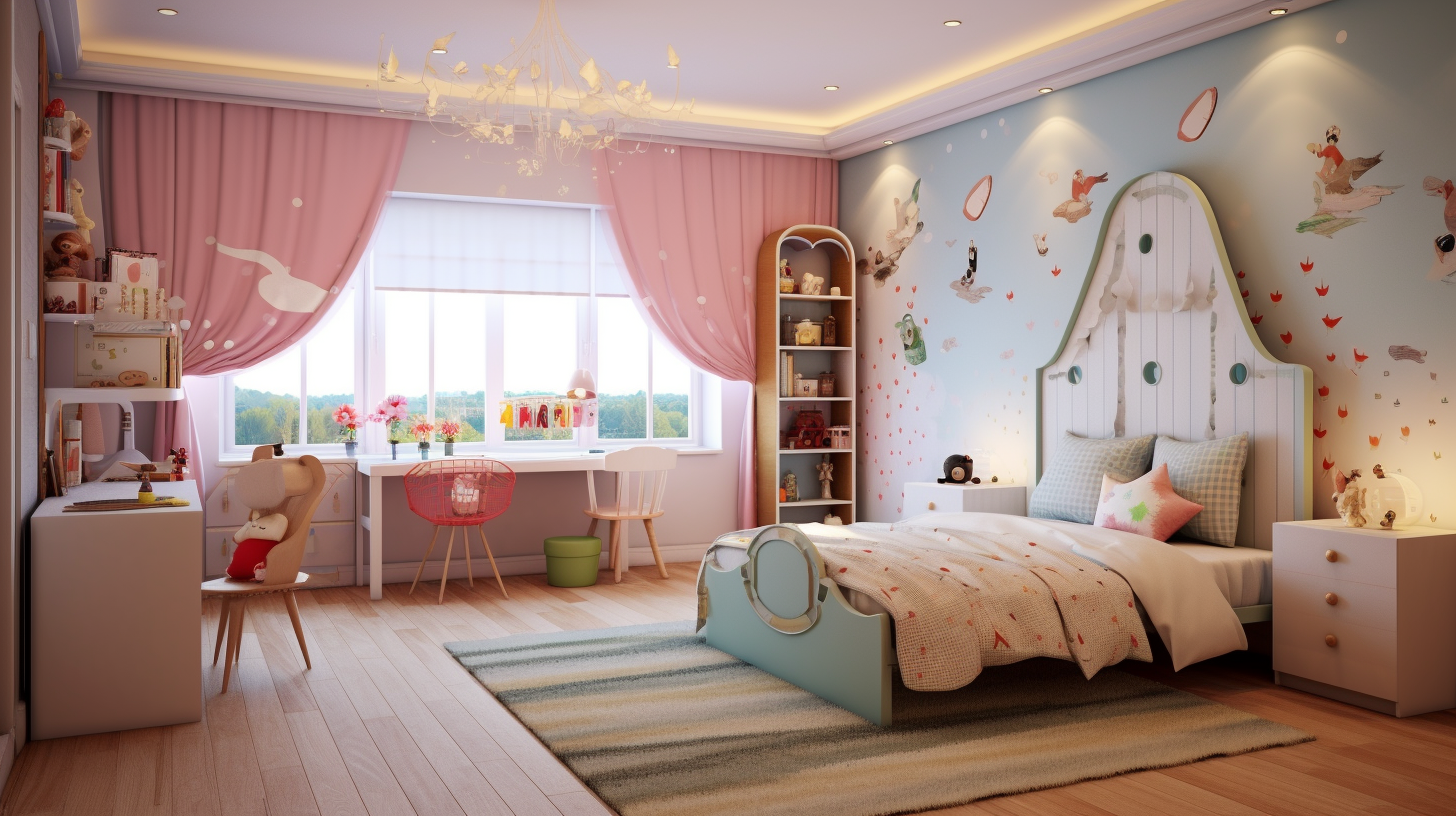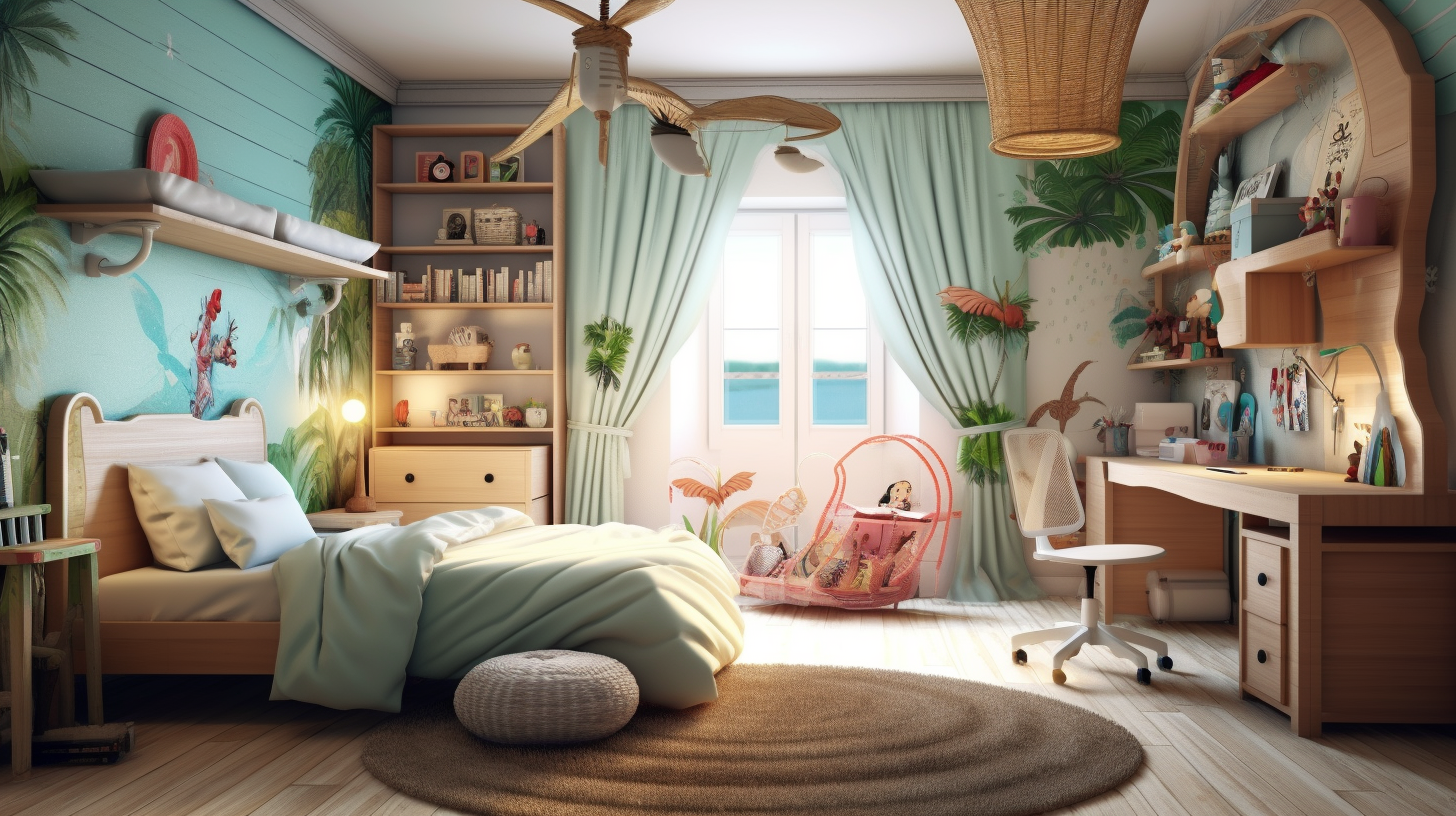Creating a Whimsical Haven: Decorating Your Child's Room
Creating a Whimsical Haven: Decorating Your Child's Room
Introduction
Creating the perfect space for your child can be a delightful journey filled with creativity, fun, and even a trip down memory lane. The key lies in balancing functionality, comfort, and a sprinkling of fantasy.
The Power of Colour
When it comes to creating an energetic and inspiring atmosphere, the choice of colour is paramount. Remember to involve your child in the decision-making process. From calming pastels to vibrant, playful hues, the spectrum of possibilities is endless.
Injecting Personality with Wall Art
One of the easiest ways to personalise a room is by adorning the walls with art that reflects your child’s interests. From animals and superheroes to inspiring quotes, there are an abundance of options.
Mastering the Art of Storage
For a room to be functional and clutter-free, incorporating smart storage solutions is crucial. From open shelves to storage benches and under-bed drawers, there are plenty of creative ways to keep things organised.

Involving Your Child
Give your child a sense of ownership by involving them in the decor and layout process. Incorporating their personality can be achieved through themes, and dedicated workspaces can encourage learning and creativity.
Furniture That Grows with Them
When decorating, think long-term. Consider furniture that can adapt to your child's needs as they grow. From cribs that convert into toddler beds to changing tables that can be used as a dresser, opting for multi-functional pieces is a smart move.
The Floor is a Playground
Children spend a lot of time on the floor, so making it comfortable and safe is important. A soft, plush rug can add comfort, provide soundproofing, and even become a part of their play.
Navigating Themes
Often, a child’s room is built around a theme. This can be based on your child's interests, hobbies, or anything that sparks their imagination. From superheroes to safari animals, fairy-tales to sports, the theme can set the tone for the entire room. While the theme might influence your choice of wall colour, furniture, and accessories, remember to maintain a balance. The idea is to subtly weave in elements of the theme rather than inundate the room with it.
Considering Wallpaper and Wall Decals
A creative way to inject more personality and match the room's theme is through wallpaper or wall decals. They come in a plethora of designs, are easy to apply, and are a quick fix to brightening up a room. Best of all, many wall decals are easily removable, making them a perfect choice for those who prefer to change the room's decor frequently.

Lighting the Room
Just like in any other room in the house, lighting plays a crucial role in a child’s room. It isn’t merely about brightening up the room; lighting can enhance the room’s atmosphere, add warmth, and even double up as decorative features. You can opt for a mix of ambient lighting, task lighting for reading or homework, and accent lighting to highlight special features in the room.
Embracing Natural Light
Where possible, make the most of natural light. It does not just illuminate the room but can make it appear bigger and more inviting. Use light, airy curtains or blinds that allow natural light to filter through while still providing privacy.
Creative Ceiling Designs
Why should fun and creativity be limited to the walls? Look upwards and consider the ceiling as a blank canvas waiting to be painted. Whether it's a sky full of stars, fluffy clouds, or colourful patterns, a creatively designed ceiling can add a magical touch to a child's room.
Creating a Reading Nook
Cultivate the habit of reading by creating a cosy reading nook. A comfortable chair, a soft throw, and a bookshelf within easy reach can make reading an enjoyable experience. Add a quirky lamp for late-night reading, and you’ve set the scene for countless adventures through books.
Safety Measures
When decorating a child’s room, safety is paramount. From ensuring furniture has rounded corners to securely fastening bookcases and tall furniture to the wall, every little detail matters. Also, be mindful of corded window coverings, which can pose a hazard.
Considering Sustainability
With growing environmental consciousness, sustainability has become a key consideration when decorating any space, including a child's room. From furniture to textiles, consider choosing items made of sustainable materials. Opting for second-hand or vintage pieces not only helps reduce your environmental footprint but also adds character to the room.
Eco-Friendly Toys
When it comes to toys, there’s a plethora of eco-friendly options in the market. Whether it's wooden toys or those made from recycled materials, such options are not only environmentally friendly but also often more durable than their plastic counterparts.
Importance of Personal Space
As children grow, they begin to value their personal space more. It’s essential that their room is a place where they can express their individuality. Allowing them to choose their own bedding or encouraging them to display their artwork can give them a sense of ownership and make them feel more connected to their room.
Involve Your Child in the Decorating Process
Involving your child in the decorating process can be an excellent way to foster creativity and decision-making skills. Giving them the freedom to choose some elements of their room’s decor not only makes it more personal to them but also gives them a sense of accomplishment.

Experiment with Textures
Don’t be afraid to mix and match different textures. A fluffy rug, a sleek wooden floor, or a soft velvet chair can add depth and interest to the room. Different textures can stimulate a child’s senses, contributing to their sensory development.
Soft Furnishings
Cushions, throws, and curtains not only add comfort but also provide an opportunity to introduce different patterns and colours to the room. These can be easily switched out as your child's tastes evolve.
Plan for the Future
Children grow up fast, and their interests change as they mature. While it's great to incorporate their current favourite themes or characters, keep in mind that these may not be their favourites in a few years. Opt for elements that can be easily updated, such as bedding, art, and accessories.
Creating a Workspace
As your child starts school, they will need a dedicated workspace for homework and studying. Ensure it is well lit and free from distractions. Personalise it with fun accessories like colourful stationery, quirky lamps, and inspiring wall art to make study time more enjoyable.
Decorating with Learning in Mind
A child's room can be a place of learning too. Wall maps, educational posters, or a world globe can spark curiosity and encourage learning. A chalkboard wall or a world map wall decal can be both functional and decorative.
Conclusion
Decorating your child's room should be a joyous and fulfilling experience. By involving your child in the process, focusing on versatile furniture, smart storage solutions, and fun, creative elements, you can create a whimsical haven that not only charms your child but also stands the test of time. Always remember, the aim is to create a nurturing space where your child feels comfortable, inspired, and loved.






